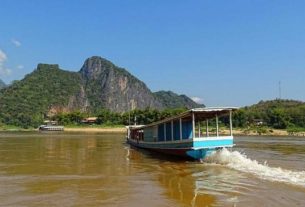Demand is high for solar energy in Thailand, where a pioneering project is afoot in the western province of Kanchanaburi.
Finishing touches are being put on the first large-scale direct-steam-generation-based parabolic trough power plant in Asia.
The sun shines brightly as about 10 workers clean the troughs before the final reflective layers are fastened to the structure, which is to begin generating solar-powered electricity from the end of August.
The plant has a nominal capacity of 5 megawatts. It would be the world’s first commercial parabolic trough power plant using water instead of thermal oil as a heat carrier.
‘It’s a milestone for us,’ Joachim Krueger, the founder of Solarlite GmbH, the German company building the plant, said at the plant’s final inspection.
Krueger’s team has taken 18 months to construct the solar thermal power plant for electricity provider Thai Solar Energy Co Ltd in Huai Krachao, 350 kilometres north-west of Bangkok.
Using groundbreaking technology, Solarlite has developed parabolic mirrors out of light composite material. ‘I’m waiting impatiently for the start,’ Krueger said.
The plant occupies 100,000 square metres and consists of 32 parabolic troughs, each 360 metres in length, creating a combined reflective surface of 45,000 square metres.
The troughs rotate from east to west to track the sun. The sun’s energy is reflected onto a receiver pipe positioned at the focus of the parabolic mirror. Water passing through the receiver pipe is heated up by the concentrated reflected sun radiation and is converted into steam, which produces electricity by means of a turbine generator.
‘There is no danger of oil leaks,’ Krueger said. ‘The system is completely environmentally friendly.’
German solar technology experts, welders, metal workers and plastics engineers have been working alongside Thai employees on the plant’s construction.
The Asian Development Bank said it believes Asia’s future lies with solar energy even though it currently provides less then 0.25 per cent of the continent’s energy needs.
‘Using the power of the sun is no longer an option for Asia, it’s a necessity,’ bank vice president Xiaoyu Zhao said in Bangkok.
Thailand became a forerunner in the area by setting the conservative target of increasing its solar energy capacity to 550 megawatts by 2022.
It now has a capacity of just under 50 megawatts, but a feed-in tariff, or payment designed to accelerate investment in renewable energy, of 8 baht (27 cents) per kilowatt hour over 10 years has led to a boom.
According to figures released by the Thai Energy Ministry, plants with a total capacity of 2,000 megawatts have been approved and applications have been made for a further 1,300 megawatts.
The feed-in tariff for future projects has been reduced to 6.5 baht.
Parabolic trough plants differ from PV, or photovoltaic, solar power stations in that they can deliver electricity and heat simultaneously, opening up more uses for what it produces. The residual heat, for example, could be used for seawater desalination or running air conditioners, Krueger said.
Krueger’s company builds plants that can produce 5 to 50 megawatts. A 5-megawatt plant is capable of producing enough energy to run a 400-bed hotel.
The plant in Kanchanaburi would only produce electricity, and Thai Solar Energy has already commissioned two other stations. Krueger said Solarlite has contracts to build 50 plants in Thailand. About 240 of his 300 employees work in the country.
While PV stations can produce electricity even on a cloudy day, parabolic troughs need constant and direct sunshine. However, having studied Thailand’s weather patterns, Krueger said he does not believe this requirement would be a problem.
‘Although our plants are 10-per-cent more expensive to construct than PV power stations, we produce on average 30-per-cent more electricity with the same capacity,’ he said.
Because solar thermal power plants like the one in Kanchanaburi can work with other energy sources apart from the sun, Krueger said he believes there is huge potential for growth – for example, plants that generate electricity using solar energy during the day and biogas at night.
‘Hybrid power plants are the future,’ he said.


